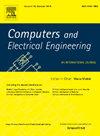CM-FusionNet: A cross-modal fusion fatigue detection method based on electroencephalogram and electrooculogram
IF 4
3区 计算机科学
Q1 COMPUTER SCIENCE, HARDWARE & ARCHITECTURE
引用次数: 0
Abstract
Mental fatigue detection plays an important role in preventing fatigue-related diseases and reducing traffic accidents caused by mental exhaustion. In this effort, existing studies have presented interesting results by using physiological signals. However, most works focus primarily on single physiological signal like electroencephalography (EEG). To address this gap, we propose an innovative cross-modal fusion method (CM-FusionNet) and conduct a multi-modal study using EEG and electrooculogram (EOG) for mental fatigue detection. Specifically, a variance channel attention (VCA) module is introduced to adaptively learn the optimal weights for each channel. Then, a Transformer fusion module is applied to extract and integrate the global features of EEG and EOG. Finally, we classify mental fatigue using the fused features. With this method, we conduct independent and cross-subject experiments on the public SEED-VIG dataset. The results of multi-modal experiment show an average accuracy of 84.62% and F1-score of 85.25%, an increase by 1.48% in accuracy 2.46% and in F1-score compared to the EOG-only experiment, and increase by 2.88% and 3.92% compared to the EEG-only experiment, respectively. This demonstrates the benefits of incorporating multi-modalities in fatigue detection and highlights the increased accuracy achieved with our CM-FusionNet approach. It also indicates that this method has potential for further exploration in the field of biomedical signal processing.
求助全文
约1分钟内获得全文
求助全文
来源期刊

Computers & Electrical Engineering
工程技术-工程:电子与电气
CiteScore
9.20
自引率
7.00%
发文量
661
审稿时长
47 days
期刊介绍:
The impact of computers has nowhere been more revolutionary than in electrical engineering. The design, analysis, and operation of electrical and electronic systems are now dominated by computers, a transformation that has been motivated by the natural ease of interface between computers and electrical systems, and the promise of spectacular improvements in speed and efficiency.
Published since 1973, Computers & Electrical Engineering provides rapid publication of topical research into the integration of computer technology and computational techniques with electrical and electronic systems. The journal publishes papers featuring novel implementations of computers and computational techniques in areas like signal and image processing, high-performance computing, parallel processing, and communications. Special attention will be paid to papers describing innovative architectures, algorithms, and software tools.
 求助内容:
求助内容: 应助结果提醒方式:
应助结果提醒方式:


